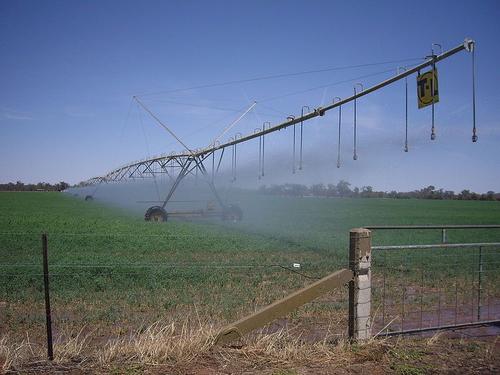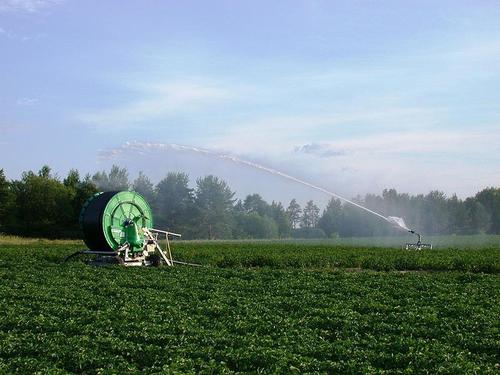Sprinkler irrigation
In case of the sprinkler irrigation method, water is sprayed into the air and allowed to fall on the ground surface somewhat resembling rainfall. The spray is generated by the pressured flow of water through small orifices or nozzles. The pressure is usually obtained by pumping. With careful selection of nozzle sizes, operating pressure and sprinkler spacing the amount of irrigation water required to refill the crop root zone can be applied nearly uniform at the rate to suit the infiltration rate of soil. (Varshney 1995, Stauffer & Spuhler 2012c)
The most common sprinkler methods are:
A sprinkler system can be composed of one sprinkler or many. When many sprinklers are used, they are attached to a pipeline at a predetermined spacing to achieve a uniform application amount. When selecting a sprinkler system, the most important physical parameters to consider are:
- The shape and size of the field.
- The topography of the field. Does the field have many hills with steep slopes?
- The amount of time and labor required to operate the system. How much time and labor do you have available?
(Scherer 2010)
Depending on the system, expert knowledge is necessary to carry out irrigation. It is important to maintain the whole facility. Motors, water supply pipes/hoses and all mechanical components have to be kept in shape to avoid damage and high repair costs. The operation and maintenance of irrigation equipment for gardens, such as sprinkle or spray heads, is not tricky and thus easy to handle for everyone. (Stauffer & Spuhler 2012b)
The applicability, advantages and disadvantages of sprinkler irrigation are listed here.

